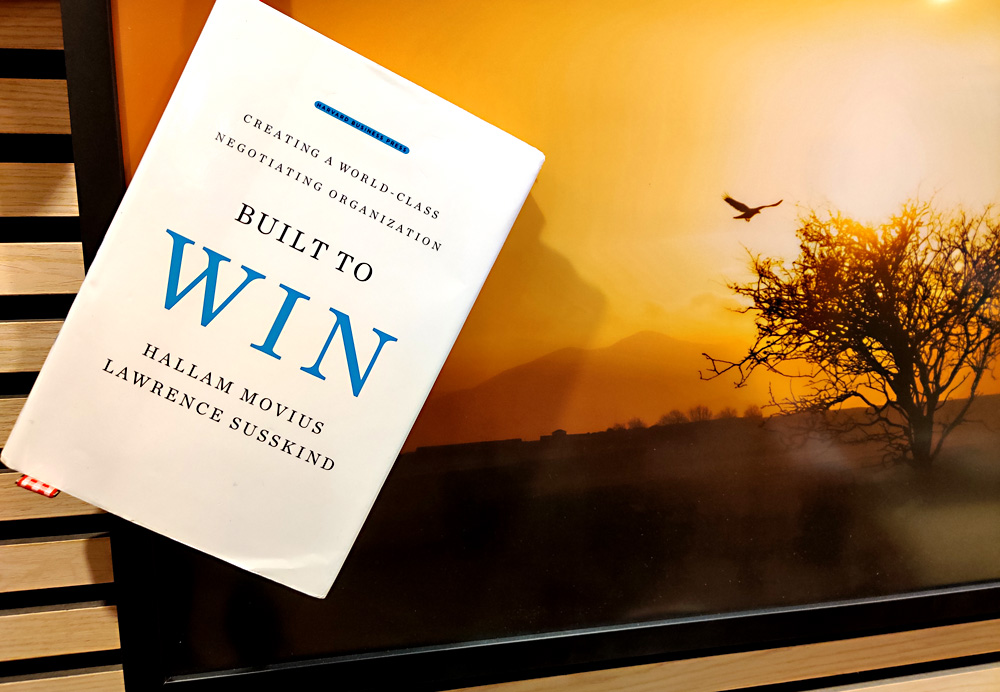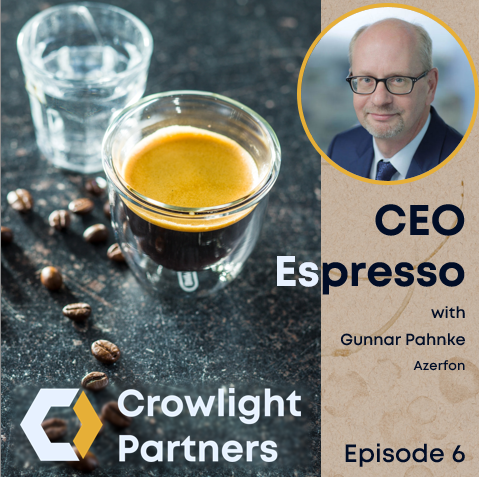CEO der Azerfon in Aserbaidschan
Gunnar Pahnke leitet seit acht Jahren die Azerfon LLC, ein Mobilfunkanbieter in Aserbaidschan. Azerfon agiert mir vielen strategischen Partnern und bietet ein Ecosystem mit breit diversifiziertem Produktportfolio an: Mobilfunk, Festnetz, TV, Endgeräte, Fintech- und Adtechlösungen. Im Gespräch gibt Gunnar Einblicke in seine Strategiearbeit, seine Führungskultur und die Besonderheiten eines Marktes, der zugleich von geopolitischer Spannung wie auch wirtschaftlichem Aufbruch geprägt ist.
Frage: Was macht eine gute Strategie aus – und wie stellst du sicher, dass sie nicht nur verstanden, sondern auch gelebt wird?
Antwort: Eine Strategie ist bei uns stark CEO-getrieben. Sie wird in einem Dreijahresrhythmus entwickelt, gemeinsam mit dem Führungsteam und dem Aufsichtsrat. Entscheidend ist: Die Umsetzung ist direkt mit den Bonuszahlungen aller CXOs verknüpft – über drei Jahre. Das schafft Bindung, Verbindlichkeit und eine starke Performance-Orientierung. Das Gesamtpaket hängt zu ca. 90% am Strategieerfolg; ein Grossteil des Bonus wird nicht jährlich ausgezahlt, sondern erst nach Ablauf der drei Jahre – und orientiert sich klar an finanziellen KPIs wie Umsatz, Marktanteil, Gewinn und Cash-Generierung.
Und die Exekution? Wie schaffst du es, dass PS auf die Straße kommen?
Ganz klar über finanzielle Steuerung. Die Verknüpfung der strategischen Ziele mit der Vergütung führt zu einer extremen High-Performance-Kultur. Auf der anderen Seite der Medaille sehen wir, dass unser Arbeitsmarkt extrem volatil ist – für 2% mehr Gehalt wechseln gute Leute sofort. Wir setzen daher auf interessante Projekte für hungrige Talente, klare Rollenbeschreibungen, stringente Aufgabenverteilung und ein leistungsbezogenes Vergütungssystem auch auf Mitarbeiterebene.
Die wirklich entscheidende Umsetzungskraft liegt aber oft außerhalb: Das Wachstum unseres Ecosystems in neue Bereiche basiert stark auf M&A, weniger auf Partnerschaften. Und da ist Verhandlungsgeschick gefragt.
Welche Besonderheiten gibt es in diesen Verhandlungen zu beachten?
Wenn wir in neue Geschäfte investieren, setzen wir auf anorganisches Wachstum, weil wir glauben, dass es damit besser und schneller geht. Dafür müssen wir wesentliche Player unserer Expansionsbereiche im Land akquirieren. Doch in einem Markt, der relativ klein und überschaubar ist, und wo diese Player wissen, dass unser Wachstum davon abhängig ist, wird oft ein strategisches Prämium verlangt. Dieses wollen wir in der Verhandlung natürlich minimieren. Zudem ist uns in der Post-Merger-Integration wichtig, die Schlüsselmitarbeiter zu behalten.
Was sind aus deiner Sicht Indikatoren für eine gesunde Unternehmenskultur?
Wir verlassen uns nicht allein auf Mitarbeiterumfragen. Viel wichtiger sind harte Indikatoren wie Fluktuation bei den Schlüsselpersonen – und deren gezielte Bindung. Wir haben rund 10% der Belegschaft als strategisch relevant identifiziert. Dort achten wir genau auf Verbleib, Entwicklung und Motivation. Anhand klarer KPIs behalten wir diese Gruppe im Auge, denn von dort strahlt eine Wirkung ins ganze Unternehmen aus. Der Hauptmesspunkt für eine gesunde Kultur ist am Ende die Erreichung unserer strategischen und operativen Ziele.
Wie hat sich dein Führungsstil im Laufe der Zeit verändert?
Er war schon immer sehr individuell. Ich führe nach Stärken und Schwächen, nicht nach Schema F. Wenn ich High-Performer habe, lasse ich sie laufen. Wenn’s hakt, coache ich – intensiv, aber gezielt. Und wenn es nicht passt, dann lieber schnell klare Entscheidungen treffen und die Spieler auswechseln.
Und wie gehst du im Führungsteam mit Meinungsverschiedenheiten um?
Die gibt es eigentlich nicht über einen längeren Zeitraum. Strategische Entscheidungen werden gemeinsam getroffen – etwa zu Pricing, was maßgeblich unsere operative Performance beeinflusst, oder Investitionen in neue Geschäftsfelder und Partnerschaften. Einmal beschlossen, ist der Rest Strategie-Exekution, das wird dann auch stringent durchgezogen.
Was lernst du selbst gerade dazu?
Zwei Themen beschäftigen mich ständig: Technologie, etwa 5G, AI, neue Geschäftsfelder wie AdTech, und die Frage, wo wir als Gruppe strategisch investieren. Ich muss verstehen, was kommt – sonst treffen wir falsche Entscheidungen.
Du arbeitest in einem geopolitisch anspruchsvollen Umfeld. Wie gehst du mit kulturellen Unterschieden um?
Interkulturelle Sensibilität ist für mich kein Trainingsthema – das ist Haltung. Zuhören, beobachten, verstehen. Wer mit der deutschen Besserwisser-Mentalität kommt, scheitert. Das beste Training ist Offenheit, und da lerne ich auch nach acht Jahren im Land täglich dazu.
Das Interview führten wir im Juni 2025.





